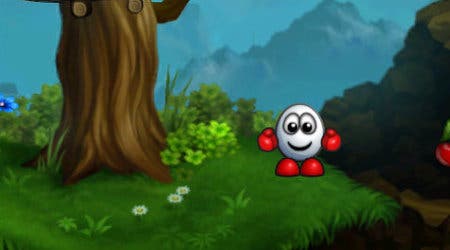The Story of Dizzy's Return
Putting the pieces back together.
It's been well over twenty years since the release of the last Dizzy game proper, and until recently the character that helped make Codemasters name was thought lost to the mists of time.
Now, thanks to the release of iOS and Android remake Dizzy Prince of The Yolkfolk, he's back - and his return owes much to the man behind the 1991 original, and who's almost single-handedly revived the series.
It's a series that began in 1987, twins Philip and Andrew Oliver concocted a blend of fairytale yarn, high adventure and puzzling. The games that followed proved a huge success, but by 1991 the pair moved on, leaving the series to Big Red Software.
It was here, in the space of two weeks, that the next Dizzy game - Dizzy Prince of the Yolkfolk - was produced, and it's here that Paul Ranson worked as Codemasters' development director. It continued the success of the series, spending a total of 37 weeks at the top of the UK software chart.
The Oliver twins went on to form Blitz Software, while in recent years Ranson and his DNA studio worked on bringing quiz games such as Goldenballs, Telly Addicts and Family Fortunes to consoles.
Ranson wanted to take a change of tack, and found himself mulling over potential game concepts. "I found I had a bit of free time last summer, and we'd been pigeonholed as doing gameshows," says Ranson, "so I felt I had to do something a bit more interactive."
The 1991 Dizzy game was an obvious candidate, and Ranson began work on a remake. Original artist Leigh Christian was hunted down on Linkedin, found travelling the world and asked if he'd revise his original work - and so much of this new Dizzy's art was created in various internet cafes in far-flung corners of the globe.
And in working with such a skeletal team, Ranson was in many ways echoing the development of the original - though thankfully he had more than two weeks to complete this new version. "There's definitely resonance," says Ranson, "and I thoroughly enjoyed programming it. It was almost relaxing, and it's been pleasant to make something that my daughters can play."
With the game all but made, Ranson then moved to work with Codemasters and the Oliver twins to make Dizzy's return a reality. "It's taken a while to get everybody on the same page," he says, "but everyone was receptive to it, and the trigger was the fact that I'd made the game."
And the return of Dizzy's something that's been on the Oliver's mind for some time. "We've been wanting to do something for years and years," says Andrew Oliver, "but there's too much politics and we've become involved with console games - and they cost an awful lot to make. Whilst we've wanted to do something, it just wasn't going to happen."
But with a game presented them near complete, the return was made possible - with another factor being a marketplace renewed by the strength of mobile gaming. "It's been really nice to see tablets and smartphones, where you've got that creativity back again," says Andrew, "lots of little games coming back, all in different directions. But we never actually thought that could be a way of bringing Dizzy back."
Dizzy is back, but in a gently altered form. Visuals have been given the once over, while controls sit on the touchpad, and there have been tweaks to the game itself. Even though Dizzy was, at the time, created to be one of the easiest games on the market, it comes across as brutally difficult in the breezy climate of the App Store and mobile gaming.
There are more lives, while a hint system's been put in place to help soothe the challenge presented by some of the more obtuse puzzles. But beneath all that, it's the same game - and it's playability is a testament to the enduring appeal of a character who, despite his absence, is still in the hearts of a generation of players - and the hope is that he can find his way into the heart of a new generation.
"Dizzy was made for kids, and it was based on a mishmash of fairy tales - so everyone would understand it. That hasn't aged at all," says Andrew, "Generally speaking, it's all timeless." Andrew goes on to note that it's a formula that has served the Shrek series extremely well in the movie industry - something that Phil's well aware of, having recently shipped a game based on the forthcoming Shrek spin-off Puss in Boots.
"We tried to make enduring characters, and we tried to give them a personality," says Andrew of Dizzy's enduring appeal. "People remember that. There are other things like Pac-Man - it's iconic in its graphics, but there's no real personality to it."
"We were asked recently what other characters would we like to see come back from the 80s" chimes in Phil Oliver, "Jet Set Willy, Manic Miner and that kind of thing - but they don't invoke a personality."
Whether the Dizzy name is making a more long-term return is very much dependent on the success of the remake, which is released this coming Friday - though the Oliver twins and Ranson all seem keen on keeping the name alive for a little longer, and on making sure that this time Dizzy is back for good.



